Building a greenhouse offers a controlled environment for plant growth, extending seasons and protecting crops. This guide provides step-by-step instructions for planning, constructing, and maintaining a greenhouse effectively.
1.1 Importance of Greenhouse Instructions
Greenhouse instructions are crucial for ensuring successful plant cultivation. They provide detailed guidance on planning, construction, and maintenance, helping gardeners avoid costly mistakes. By following these instructions, enthusiasts can create a stable and functional greenhouse, optimizing temperature, humidity, and light conditions. Clear step-by-step plans also simplify the process, making it accessible for novices while offering valuable insights for experienced growers. Properly executed instructions ensure a thriving environment for plants year-round, maximizing yield and extending growing seasons effectively.
1.2 Benefits of Building a Greenhouse
Building a greenhouse offers numerous benefits, including year-round plant growth and protection from harsh weather conditions. It allows for early spring planting and extends the harvest season well into fall. Greenhouses also provide a controlled environment for optimal temperature, humidity, and light management. This makes them ideal for growing sensitive or exotic plants. Additionally, greenhouses can be energy-efficient and customizable to suit various needs and budgets. They offer a sustainable way to garden while enjoying the satisfaction of nurturing plants in a protected space, ensuring fresh produce and vibrant blooms throughout the year.
1.3 Overview of the Greenhouse Building Process
The greenhouse building process involves several key steps, starting with planning and design. This includes selecting the right type of greenhouse, choosing a suitable location, and determining the size and budget. Once the plan is finalized, the construction phase begins with site preparation, laying the foundation, and assembling the frame. Covering materials like plastic or polycarbonate are then installed, followed by adding doors, windows, and finishing touches. The final stages focus on setting up the interior features and ensuring the structure is secure and functional for optimal plant growth throughout the year.
Planning and Design
Assess your needs, choose the greenhouse type, location, and size, then create a detailed plan and budget to ensure a successful and functional greenhouse project.
2.1 Choosing the Right Greenhouse Type
Selecting the appropriate greenhouse type is crucial. Consider options like traditional glasshouses, hoop houses, or mini greenhouses. Each type varies in cost, durability, and purpose. Glasshouses offer excellent light transmission, while hoop houses are budget-friendly and easy to assemble. Mini greenhouses are ideal for small spaces. Assess your budget, available space, and plant requirements to make an informed decision. Your choice will significantly impact the functionality and efficiency of your greenhouse.
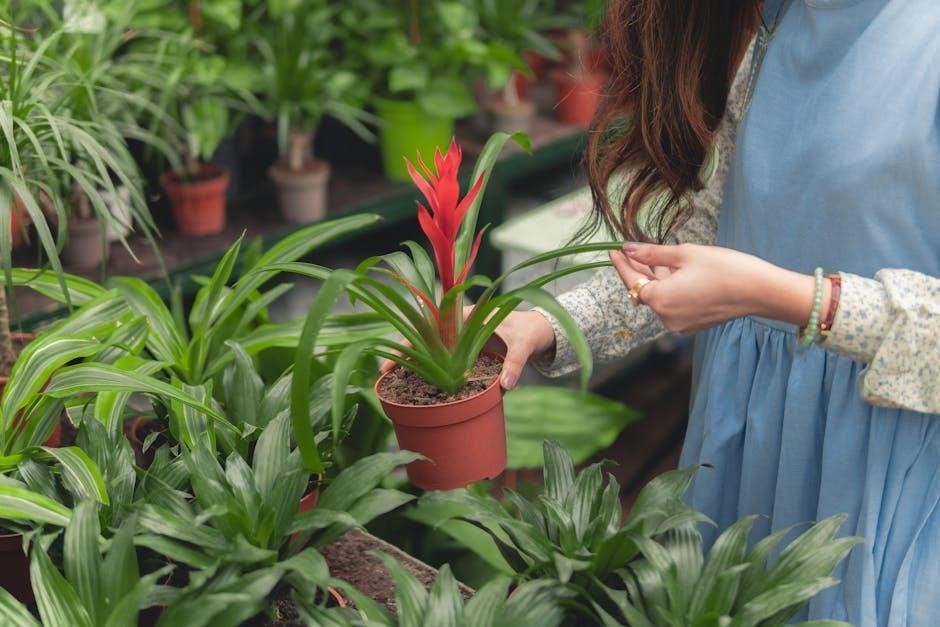
2.2 Selecting the Best Location for Your Greenhouse
Choosing the right location is vital for your greenhouse’s success. Ensure the area receives ample sunlight, ideally south-facing for maximum light exposure. Avoid shaded spots and low-lying areas prone to waterlogging. The site should be level to ensure proper drainage and structural stability. Consider wind direction to protect your greenhouse from harsh gusts. Additionally, select a spot with easy access for maintenance and plant care. Proper placement will optimize temperature regulation and plant growth, making your greenhouse more efficient and productive year-round.
2.3 Determining the Size and Budget
Determining the size and budget for your greenhouse is crucial for a successful project. Start by assessing the available space and your gardening needs to choose the appropriate size. Consider the types of plants you’ll grow and the equipment you’ll need. Set a realistic budget, accounting for materials, labor, and tools. Research costs of framing materials, covering options, and foundation supplies. DIY kits can range from $300 to $1,000, depending on size and features. Plan carefully to balance your budget with the desired functionality and durability of your greenhouse.
2.4 Designing the Layout and Features
Designing the layout and features of your greenhouse requires careful planning to maximize space and functionality. Consider workflow, plant placement, and accessibility. Shelving and benches should be strategically positioned for easy access. Include features like automatic window openers, ventilation systems, and irrigation setups to enhance plant growth. Ensure adequate lighting and consider adding heating for year-round use. Customize the design to suit your needs, whether for starting seeds, growing vegetables, or storing plants. A well-designed greenhouse optimizes productivity and ensures a enjoyable gardening experience.

Materials and Tools Needed
Essential materials include framing options like steel, wood, or PVC, and covering materials such as plastic, glass, or polycarbonate. Foundation supplies, anchors, and tools like drills and wire locks are also required.
3.1 Framing Materials (Steel, Wood, PVC)
Steel framing offers durability and versatility, ideal for large greenhouses. Wood provides a natural, eco-friendly option, often more cost-effective. PVC is lightweight, easy to assemble, and resistant to rot. Each material has unique benefits, so consider budget, durability, and ease of assembly when choosing. Steel frames are sturdy but may require more tools, while wood offers aesthetic appeal but needs maintenance. PVC is perfect for temporary or small structures. Selecting the right framing material ensures a stable and long-lasting greenhouse structure tailored to your needs and preferences.
3.2 Covering Materials (Plastic, Glass, Polycarbonate)
Plastic is a cost-effective, lightweight covering option, ideal for temporary greenhouses. Glass offers superior light transmission and durability but is heavier and more expensive. Polycarbonate is a popular choice due to its impact resistance, lightweight design, and excellent thermal insulation. Each material has its benefits: plastic for affordability, glass for aesthetics and longevity, and polycarbonate for practicality and energy efficiency. Choose based on your budget, climate, and desired durability to ensure optimal growing conditions and structural integrity for your greenhouse.
3.3 Foundation and Anchoring Supplies
A sturdy foundation is crucial for a stable greenhouse. Use treated lumber or concrete footings to create a durable base. Anchors like ground screws or augers secure the structure to the ground, preventing wind damage. Ensure the foundation is level and well-drained to avoid water pooling. Proper anchoring materials, such as steel brackets or straps, reinforce the connection between the frame and the ground. These supplies ensure the greenhouse remains stable and secure, even in harsh weather conditions, providing a solid base for your gardening efforts.
3.4 Essential Tools for Construction
Essential tools for greenhouse construction include a drill, screwdriver, and saw for framing, along with measuring tape and level for accuracy. A wrench and pliers handle bolts and wiring, while safety gear like gloves and goggles protect during assembly. A utility knife is useful for cutting various materials, and a ladder assists with reaching higher areas. Optional tools like an impact driver or hammer can aid in securing frames tightly. Ensuring all components are securely installed guarantees a stable and durable greenhouse structure.
Construction Process
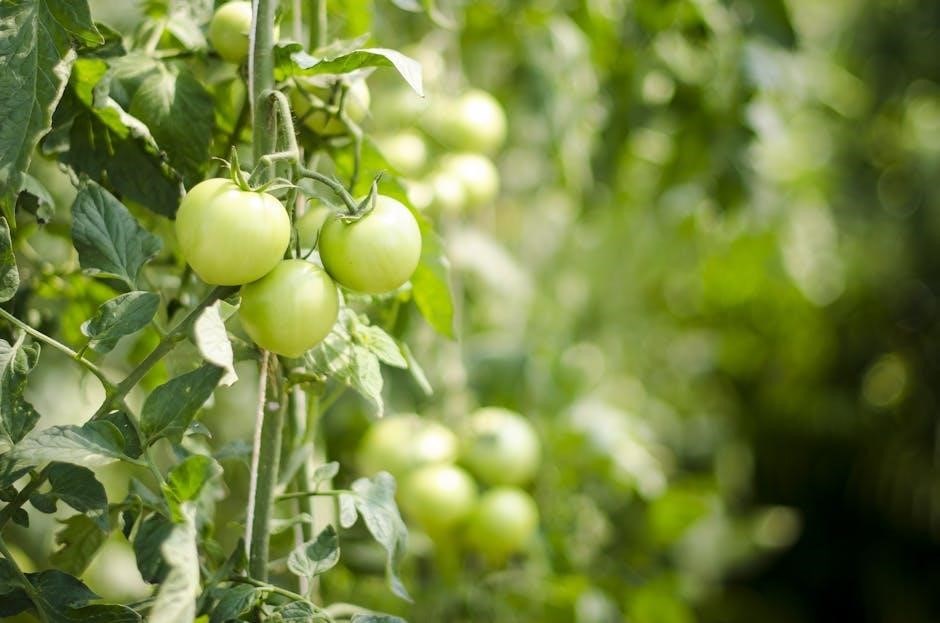
Constructing a greenhouse involves site preparation, building the foundation, assembling the frame, installing covering materials, and adding doors and windows for functionality and ventilation.
4.1 Preparing the Site
Preparing the site is the first step in building a greenhouse. Start by clearing the area of debris and leveling the ground to ensure even placement. Check for proper drainage to avoid water accumulation. Install a weed barrier fabric to prevent plant growth interference. Mark the perimeter of your greenhouse with stakes and string for precise measurements. Finally, ensure the site receives adequate sunlight and is protected from harsh winds for optimal growing conditions.
4.2 Building the Foundation
Building a sturdy foundation is essential for your greenhouse. Start by laying a level base using treated lumber or concrete, ensuring it aligns with your greenhouse dimensions. Anchor the foundation securely to the ground using galvanized brackets or screws to prevent shifting. For added stability, pour concrete footings around the perimeter if needed; Once the foundation is set, attach the greenhouse frame tightly, ensuring it is square and level. Proper anchoring ensures safety and longevity, especially in windy conditions.
4.3 Assembling the Frame
Assemble the greenhouse frame by attaching side walls, front, and back panels using screws or bolts. Use a level to ensure the structure is square and even. Secure the roof trusses to the frame, ensuring proper alignment. For added stability, use wire locks or springs to hold the covering material tightly. Frame materials like steel, PVC, or wood can be used, depending on durability and budget. Tighten all connections firmly to withstand weather conditions. Proper assembly ensures a sturdy and long-lasting greenhouse structure.
4.4 Installing the Covering Material
Start by attaching the covering material, such as plastic, glass, or polycarbonate, to the frame using wire locks or springs. Ensure the material is tight and evenly spread to prevent sagging. Secure the edges with rubber seals or tape for a weatherproof fit. For additional support, install rafters or crossbars. Covering materials provide insulation and sunlight transmission, essential for plant growth. Regularly inspect and tighten the material to maintain structural integrity and optimal growing conditions.
4.5 Adding Doors and Windows
Frame door and window openings, ensuring proper alignment with the greenhouse structure. Install the door, attaching hinges and a secure locking mechanism. Windows should be fitted with durable frames, sealed with rubber gaskets or weatherproof tape. Add automatic window openers for ventilation control. Secure all edges with wire locks or spring clips. Install shade cloth if needed to regulate sunlight. Ensure all openings are tightly sealed to maintain temperature and humidity. Finally, inspect doors and windows for proper function and weatherproofing to ensure optimal performance and energy efficiency.
4.6 Finishing Touches (Edging, Exterior Work)
Complete the greenhouse by installing edging around the base to prevent weeds and improve appearance. Apply weatherproof sealants to all exterior joints and gaps. Trim excess plastic or polycarbonate material neatly around doors and windows. Install solar lighting or shade cloth if desired. Ensure the exterior is clean and free of debris. Check all anchors and foundation bolts for tightness. Finally, inspect the entire structure for any gaps or weaknesses, addressing them promptly to ensure durability and weather resistance. Proper finishing ensures a secure and long-lasting greenhouse structure.
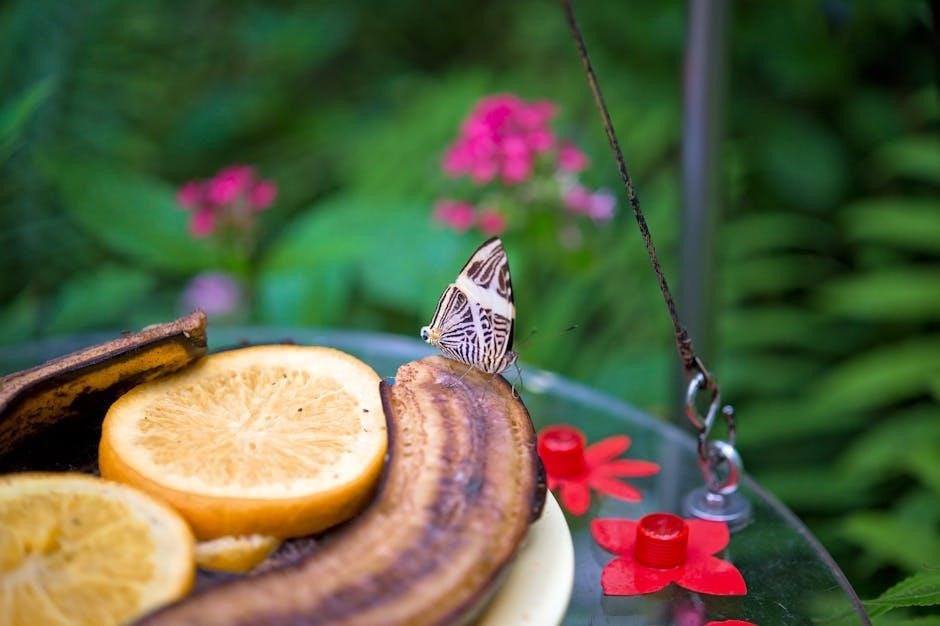
Interior Setup and Features
Install shelves and benches for plant organization, set up irrigation systems, and add heating and ventilation for optimal conditions. Incorporate automatic openers and shade cloth for temperature control.
5.1 Installing Shelves and Benches
Installing shelves and benches is essential for maximizing space and organizing plants. Use durable materials like treated wood or metal for longevity. Ensure shelves are sturdy to hold heavy pots and trays. Position benches at a comfortable height for potting and maintenance. Add hooks or storage bins underneath for tools and supplies. Proper spacing between shelves allows for good air circulation, promoting healthy plant growth. Consider customizing sizes based on specific needs to optimize functionality and accessibility within the greenhouse.
5.2 Setting Up Irrigation and Watering Systems
Efficient irrigation is crucial for plant health in a greenhouse. Consider manual or automated systems based on your greenhouse size and time availability. A rainwater collection system can be eco-friendly and cost-effective. Drip irrigation delivers water directly to roots, reducing evaporation, while overhead sprinklers cover larger areas. Automation with timers and sensors can save time and prevent overwatering; Ensure proper drainage to avoid water pooling and root rot. Filter water to maintain quality, especially with tap water. Use durable, UV-resistant materials for fittings and tubing. Plan for scalability and regular maintenance to keep the system efficient. Balance initial costs with long-term benefits for water efficiency and plant health.
5.3 Adding Heating and Ventilation
Heating and ventilation are essential for maintaining optimal greenhouse conditions. Install heating systems like electric heaters or propane heaters to keep temperatures stable during cold nights. Solar heating can be a cost-effective alternative, using the sun’s heat during the day. Ventilation systems, including roof vents and side windows, ensure airflow, preventing overheating and humidity buildup. Automatic openers can regulate vent operation based on temperature. Proper insulation and weatherstripping prevent heat loss. Balance heating and ventilation to create a stable environment for plant growth year-round, ensuring healthy air circulation and temperature control. Regular maintenance ensures efficiency and longevity of these systems.
5.4 Incorporating Automatic Openers and Shade Cloth
Automatic vent openers and shade cloth enhance greenhouse functionality. These devices regulate temperature by opening vents at set temperatures, ensuring proper airflow without manual intervention. Shade cloth reduces excessive sunlight during peak hours, preventing overheating and plant stress. Together, they maintain optimal growing conditions, especially in warmer climates. Install shade cloth on roofs or walls, and pair it with automatic openers for seamless temperature control. These additions improve plant health, reduce maintenance, and ensure a stable environment for year-round gardening, making them essential upgrades for any greenhouse setup.
Maintenance and Upkeep
Regular inspections, cleaning, and temperature management are crucial for maintaining a healthy greenhouse environment. Addressing issues promptly ensures optimal plant growth and structural longevity over time.
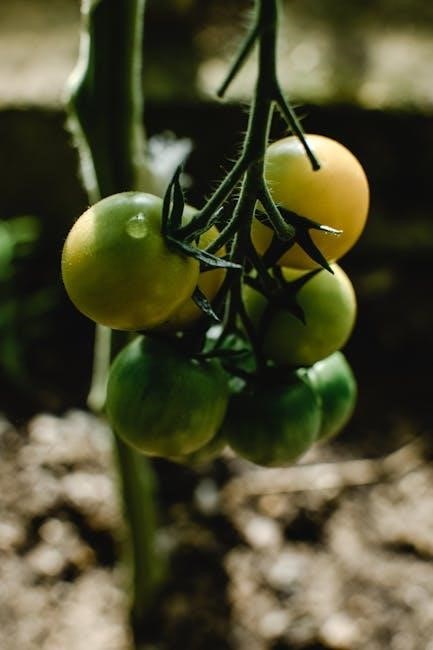
6.1 Regular Inspections and Repairs
Regular inspections are essential to identify and address potential issues early. Check the frame, covering material, and foundation for signs of wear or damage. Repairing leaks, tightening loose joints, and replacing damaged panels promptly prevents further deterioration. Inspect doors and windows for proper sealing to maintain temperature control. Additionally, examine irrigation systems and heating units for functionality. Regular maintenance ensures the greenhouse remains structurally sound and efficient, protecting your plants and extending the lifespan of the structure.
6.2 Cleaning and Sanitizing the Greenhouse
Cleaning and sanitizing your greenhouse is crucial for maintaining a healthy environment for plants. Start by removing debris and wiping surfaces with a mild detergent solution. Use soft brushes to clean frames and windows to avoid scratching. Rinse thoroughly to prevent chemical residues. Disinfect all surfaces, especially after pests or diseases are present. Regular cleaning prevents mold, mildew, and pathogens from spreading. Empty standing water to reduce mosquito breeding. A clean greenhouse promotes healthy plant growth, improves light penetration, and ensures optimal conditions for your crops.
6.3 Managing Temperature and Humidity
Managing temperature and humidity in a greenhouse is essential for plant health. Use heaters or coolers to maintain optimal temperatures, typically between 65-75°F during the day and above 50°F at night. Automatically open vents or windows to release excess heat and retain warmth. Employ shade cloths or misting systems to regulate humidity and prevent overheating. Monitor conditions with sensors or data loggers to ensure stability. Proper management prevents stress, promotes growth, and reduces the risk of disease, creating a balanced environment for thriving plants.
6.4 Seasonal Preparation and Storage
Seasonal preparation ensures your greenhouse remains functional year-round. In spring, clean and sanitize surfaces, inspect systems, and prepare planting areas. Summer requires regular ventilation checks and shade cloth installation. Fall involves harvesting, storing equipment, and protecting plants from frost. Winter calls for insulating walls, using thermal covers, and monitoring temperature. Store tools and supplies in labeled containers, keeping them off the floor to prevent moisture damage. Proper preparation and storage maintain plant health and extend the greenhouse’s longevity, ensuring it remains a productive space for every season.
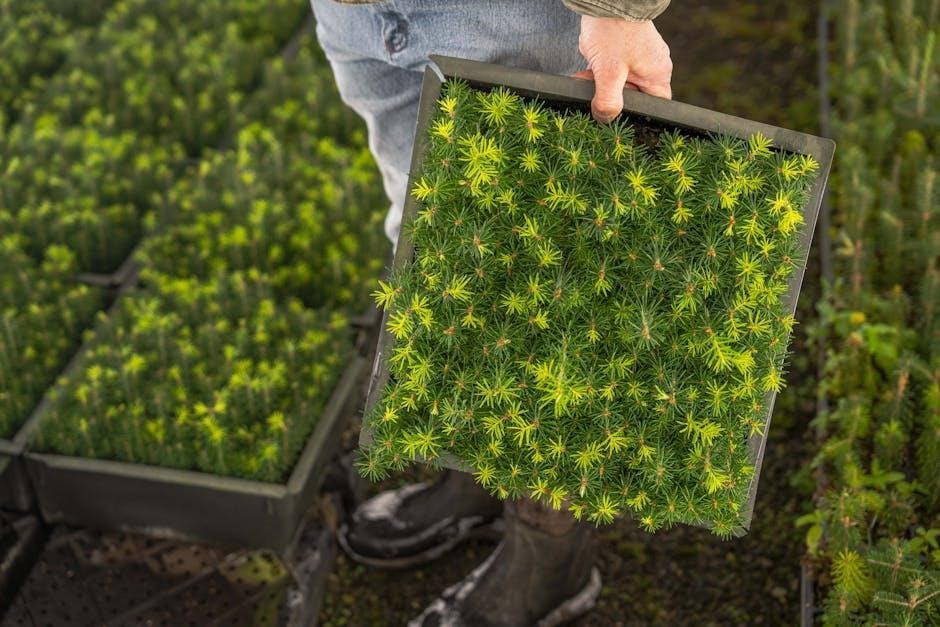
Advanced Features and Accessories
Enhance greenhouse functionality with solar lighting, hydroponic systems, and rainwater collection. These advanced features improve energy efficiency, support soilless growing, and promote sustainable practices for optimal plant growth.
7.1 Solar Lighting and Energy Solutions

Solar lighting and energy solutions are essential for optimizing greenhouse performance. Install solar panels to harness renewable energy, reducing electricity costs and environmental impact. Use energy-efficient LED grow lights to supplement natural light, especially during winter months. Consider solar-powered ventilation systems and battery storage for consistent energy supply. Incorporate string solar lights for ambient illumination and charge small electric systems. These solutions enhance sustainability, lower operating costs, and ensure a reliable energy source for year-round plant growth and greenhouse operations.
7.2 Adding Grow Lights and Hydroponic Systems
Enhance your greenhouse with grow lights and hydroponic systems for optimal plant growth. LED grow lights are energy-efficient and emit minimal heat, perfect for supplemental lighting. Consider HPS (High-Pressure Sodium) lights for flowering plants. Hydroponic systems, like Ebb and Flow or Nutrient Film Technique (NFT), deliver nutrients directly to roots, improving growth rates. These systems are space-efficient and reduce water usage. Integrate them seamlessly into your greenhouse design for year-round cultivation of a variety of crops, ensuring consistent yields and healthier plants.
7.3 Incorporating Rainwater Collection Systems
Incorporate rainwater collection systems to reduce water costs and enhance sustainability. Install a roof catchment, gutters, and downspouts to direct rainwater into a storage tank. Add a filtration system to ensure water quality for irrigation. First flush devices can remove debris before water enters the tank. This eco-friendly solution reduces reliance on municipal water and supports plant growth naturally. Regular maintenance ensures the system remains efficient and free from contamination, making it a valuable addition to your greenhouse setup for sustainable gardening practices.
7.4 Customizing with Unique Design Elements
Customize your greenhouse with unique design elements to reflect your style and enhance functionality. Use recycled materials, such as old windows or reclaimed wood, for a rustic charm. Incorporate themed designs, like Victorian-inspired frames or modern glass walls, to create visual appeal. Add decorative accents, such as stained glass panels or carved wood details, for a personal touch. Consider smart features, like automated shading or solar-powered vents, to improve efficiency. These creative additions make your greenhouse a standout structure that blends aesthetics with practicality, ensuring it stands out in your garden while serving its purpose effectively.
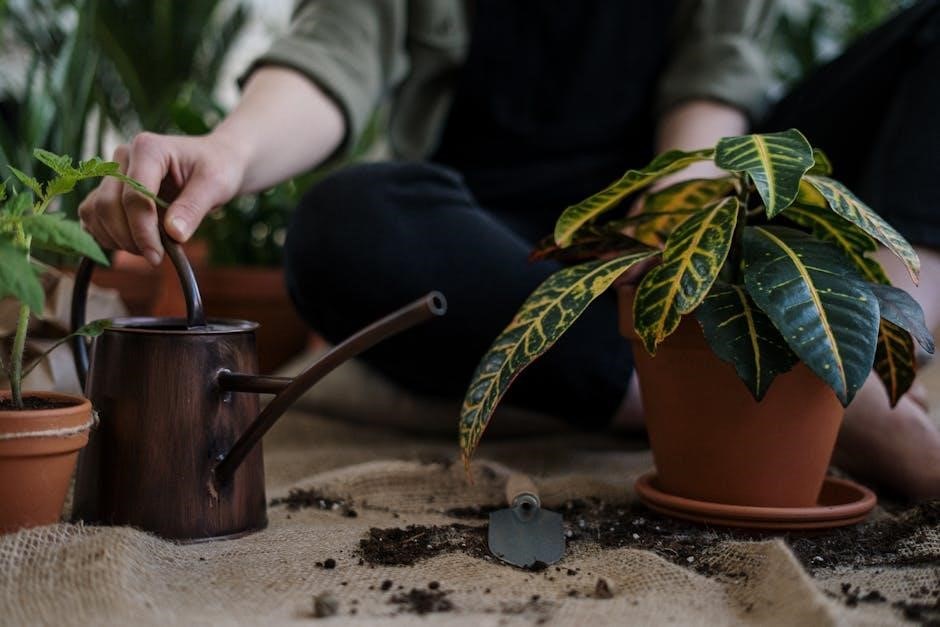
Troubleshooting Common Issues
Troubleshooting common greenhouse issues involves addressing leaks, structural weaknesses, pests, diseases, ventilation problems, and damaged coverings. Regular inspections and timely repairs are essential for maintaining optimal growing conditions.
8.1 Addressing Leaks and Structural Weaknesses
Inspect the greenhouse frame and covering material regularly for gaps or damage. Address leaks by sealing gaps with weatherproof tape or silicone sealant. For structural weaknesses, reinforce frames with additional bracing or replace damaged sections. Ensure all connections are tight and secure. If using plastic or polycarbonate panels, check for loose fasteners and reattach as needed. Regular maintenance prevents further damage and extends the lifespan of your greenhouse.
8.2 Managing Pests and Diseases
Regularly inspect plants for signs of pests or disease, such as discoloration, holes, or unusual growth. Introduce natural predators like ladybugs or lacewings to control infestations. Use organic pesticides or neem oil as a safe treatment option. Maintain a clean environment by removing debris and dead plant material. Ensure good air circulation and avoid overwatering to prevent fungal diseases. Quarantine new plants before introducing them to the greenhouse. Monitor temperature and humidity levels, as extreme conditions can weaken plants and make them more susceptible to issues.
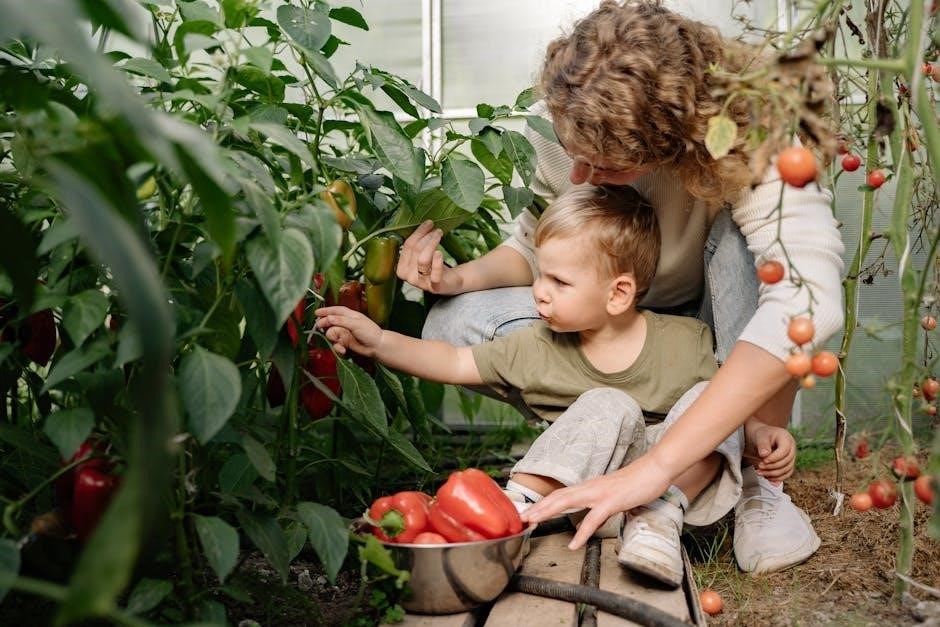
8.3 Solving Ventilation and Condensation Problems
Poor ventilation and excess condensation can lead to mold and plant damage. Install automatic window openers to regulate airflow and prevent overheating. Use shade cloth to reduce direct sunlight and minimize moisture buildup. Ensure adequate roof ventilation to allow hot, humid air to escape. Consider adding solar-powered vents for energy efficiency. Regularly monitor temperature and humidity levels to maintain a balanced environment. Proper airflow and condensation management are crucial for healthy plant growth and structural integrity of the greenhouse.
8;4 Repairing Damaged Covering Materials
Inspect the greenhouse covering regularly for tears or holes. Use clear repair tape or plastic sealants to patch damaged areas. For severe damage, replace the affected panel entirely. Ensure the new material is securely fastened using wire locks or clips. Poly carbonate and plastic sheets can be cut to size for seamless repairs. Addressing covering material issues promptly prevents moisture leaks and maintains optimal growing conditions. Regular maintenance ensures the longevity and efficiency of your greenhouse structure.
